- News
- Reviews
- Bikes
- Components
- Bar tape & grips
- Bottom brackets
- Brake & gear cables
- Brake & STI levers
- Brake pads & spares
- Brakes
- Cassettes & freewheels
- Chains
- Chainsets & chainrings
- Derailleurs - front
- Derailleurs - rear
- Forks
- Gear levers & shifters
- Groupsets
- Handlebars & extensions
- Headsets
- Hubs
- Inner tubes
- Pedals
- Quick releases & skewers
- Saddles
- Seatposts
- Stems
- Wheels
- Tyres
- Tubeless valves
- Accessories
- Accessories - misc
- Computer mounts
- Bags
- Bar ends
- Bike bags & cases
- Bottle cages
- Bottles
- Cameras
- Car racks
- Child seats
- Computers
- Glasses
- GPS units
- Helmets
- Lights - front
- Lights - rear
- Lights - sets
- Locks
- Mirrors
- Mudguards
- Racks
- Pumps & CO2 inflators
- Puncture kits
- Reflectives
- Smart watches
- Stands and racks
- Trailers
- Clothing
- Health, fitness and nutrition
- Tools and workshop
- Miscellaneous
- Buyers Guides
- Features
- Forum
- Recommends
- Podcast
feature
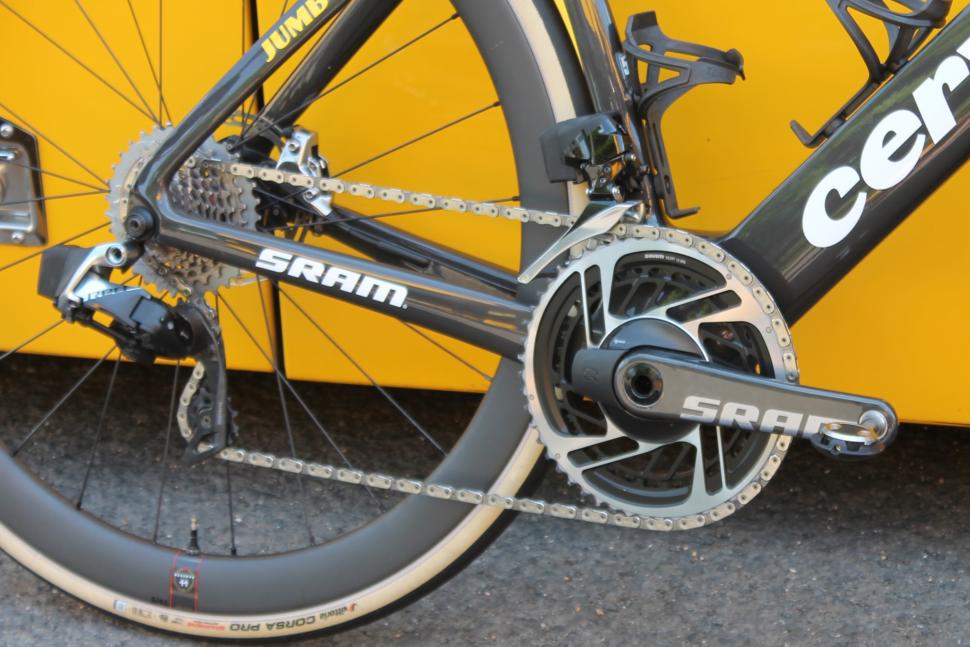 2023 Dauphine Jumbo chainset - 1.jpeg
2023 Dauphine Jumbo chainset - 1.jpegAll the gear? Check out the gearing choices of the pros at the Tour de France
Gearing choice in the Tour used to be easy, a standard chainset was the only way to go and cassette choices were limited at best. However, these days, with 12-speed options from Shimano, SRAM and Campagnolo all represented in the peloton, there's more choice than ever. We've had a nosey at the pros' bikes to see what they're using this year.
> Suffering on the hills? Find out how to get lower gears to make climbing easier
The peloton's gearing choices differ from many consumer bikes simply because the riders race at very high speeds and therefore need bigger gears to keep a comfortable cadence. Whereas most bikes you can buy come specced with 50/34t compact or 52/36t chainset, (or 48/35t and 46/33t on SRAM 12-speed groupsets paired with 10-tooth start cassettes) you'll typically find the peloton powering along on chainsets with larger chainrings.
Check out this article for a primer on the basics of gears and all the lingo
The most common chainset size in the pro peloton on normal stages is 54/40t. That's a standard Shimano Dura-Ace option, and most teams racing in the Tour de France use this groupset. This is the chainset from Dylan Groenewegen's Giant Propel (above), for example.
There are plenty of other choices, though. We spotted Edvald Boasson Hagen of Team TotalEnergies using this 55/42t chainset (above) which comes from the days when Shimano Dura-Ace was an 11-speed system.
Enric Mas, who had to withdraw from this year's Tour after sustaining an injury during the first stage, was using a 52/39t SRAM chainset (above).
Intermarché - Circus - Wanty's Georg Zimmermann uses this 55/42T Rotor setup on his Cube Litening Aero.
The Shimano neutral service bikes are fitted with 52/36T chainsets that give a broad spread of gear options for any rider who is unfortunate enough to require one.
You'll find larger chainrings during the time-trial stages when riders are consistently moving at high speeds. For example, this (above) is Luke Durbridge's TT bike with 58/46t chainrings fitted.
During last year's Tour de France, Stefan Bissegger was spotted using this 64 tooth chainring that is not available to the public.
Cassettes have varied much more over the years, largely as a consequence of the steady increase in gears, from the old days of 5-speed and 6-speed to the 12-speed setups that are currently used in the pro peloton.
As the number of gears has increased, so too has the range, with larger cassettes increasingly common, partly as a response to race routes that are getting ever harder as race organisers attempt to find even more cruelly savage mountains to send racers up.
The increase in the number of gears also means that riders can cover those larger ranges with smaller jumps between sprocket sizes. This helps them keep a more even cadence as they move across the cassette.
When we visited the Critérium du Dauphiné recently, loads of pro bikes were fiitted with 11-30t and 11-32t cassettes. These are positively humongous compared with a few decades ago when you'd get an 11-21t cassette and, if you were lucky, 11-23t for the mountains.
We saw quite a lot of 11-34t cassettes too, and that surprised us. David Gaudu's Lapierre Xelius SL (above), for example, was fitted with a 54/40t chainset and an 11-34t cassette. With a 40t inner chainring now more common than a 39t, it looks like more riders want a larger cassette to compensate on hillier roads.
Campagnolo has just updated its Super Record EPS groupset and now the cassettes come with a 10t smallest sprocket. The standard options are 10-25t, 10-27t and 10-29t.
The largest sprockets on those cassettes might seem pretty small but at the same time Campagnolo has altered the size of its chainsets to compensate. They're available in 50/34t, 48/32t and 45x29t options.
That said, we saw Ben O'Connor's BMC Teammachine (above) at the Dauphine fitted with new Campagnolo Super Record EPS shifters and derailleurs, with a 54/39t chainset and a larger cassette than any of those listed above.
SRAM offers a 10-33t cassette for Red eTap AXS, and that's what we saw fitted to one of Jonas Vingegaard's bikes ahead of the Dauphiné, matched to a 52/39t chainset.
> Which chainset is right for you?
The use of that 10t sprocket means that SRAM chainsets don't need to be as large as Shimano's to achieve the same gear ratios (Shimano's smallest cog is 11t). However, as well as the 52/39t chainset Vingegaard was using, SRAM now offers 54/41t and 56/43t options.
What about 1x?
SRAM’s 1x system, where you have a chainset with a single chainring matched to a wide-ranging cassette, has been around for a few years now and has gained more prominence lately thanks to its use by Jumbo Visma riders Jonas Vingegaard and Wout van Aert in this year’s Tour de France.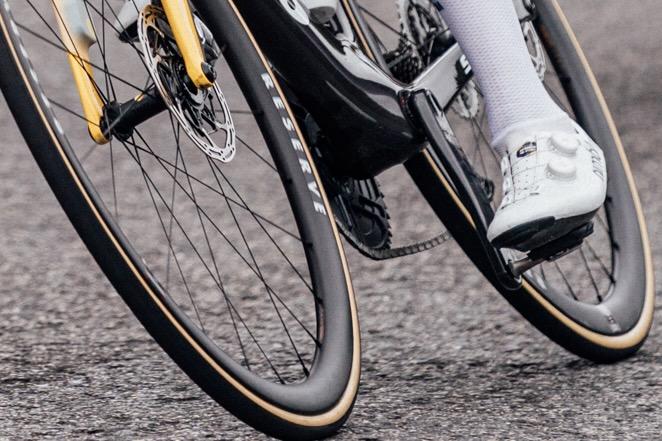
Pic: © Zac WiLLIAMS SWpix.com (t-a Photography Hub Ltd)
Jumbo-Visma switched from Shimano to SRAM for this season and we first saw Vingegaard experimenting with 1x at the Dauphiné.
> Jonas Vingegaard uses 1x gearing for Tour de France opening stages
A few riders have dabbled with 1x, with varying levels of success, and of course, there was the ill-fated Aqua Sport Blue team which solely used 1x drivetrains on 3T Strada bikes. The team boss at the time was quite scathing about either the drivetrain or the bike, or perhaps both.
There are benefits to a 1x system. There’s no duplication of gears – which is something you get with 2x groupsets – it can be lighter and more aerodynamic, and the lack of a front derailleur means there's one less component to fail.
Jumbo-Visma uses single chainring setups on its time trial bikes (above) when it doesn't need a huge spread of gears.
However, Vingegaard and Van Aert have also used 1x for normal road stages with a Wolf Tooth LoneWolf Aero chainguide fitted to help keep the chain in place.
It's not as if Jumbo-Visma has chosen to give 1x a go just for flat courses; the first two stages of this year's Tour were pretty hilly. It'll be interesting to see if the team sticks with the tech throughout the race and, if not, the circumstances in which it turns to 1x.
SRAM insists that Jumbo-Visma's use of 1x isn't a marketing exercise, by the way. It's down to the team and the individual riders which of SRAM's components they decide to use.
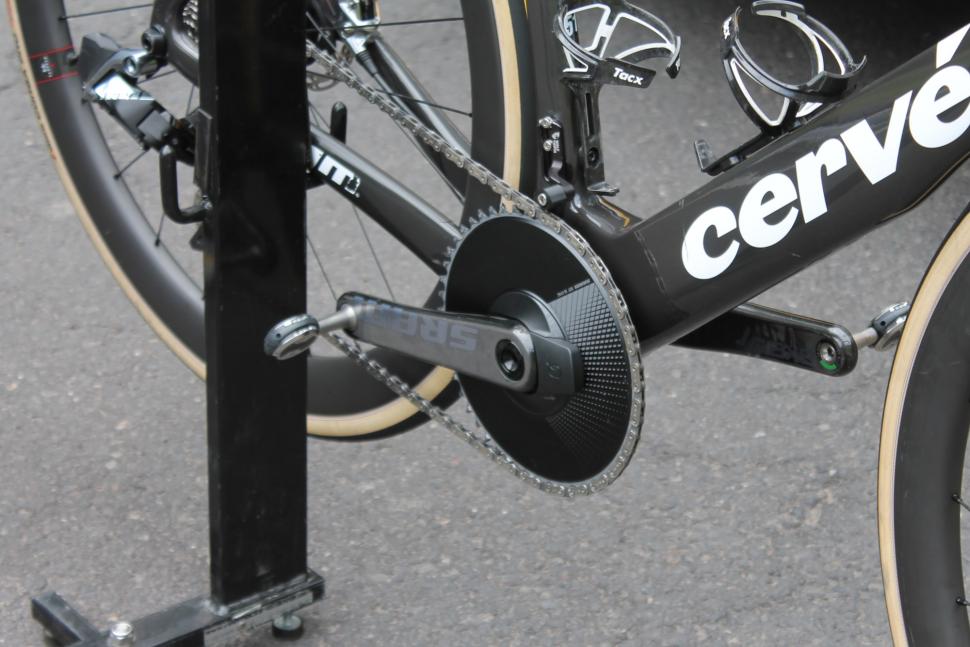
One issue with 1x is that you can still get some fairly sizeable jumps between the gears. A possible solution to this is the Classified system which basically moves the function of the front mech into the rear hub.
Classified's tech could also bring aero benefits and it has been used by a few teams. Uno X has tried it out in competition, for example, and Lotto-Dstny's Victor Campenaerts rode this year's Omloop Het Nieuwsblad with a Classified system on his bike.
The system raises some questions about wheel changes but could it be something we see in the Tour de France in the future?
> Check out Classified's innovative Powershift drivetrain
What about the rest of us?
Today’s pro road racers are provided with equipment vastly superior to 10-20 years ago, but it’s the range of gears that has been the most interesting trend as the groupsets have evolved. As the number of sprockets has increased, the gear range has increased. Are riders getting soft, are courses getting harder, or is the higher number of gears making it possible?
The three big groupset manufacturers are still focused on the needs of the pro racers and delivering groupsets to meet their needs, and then selling them to the public, but there just aren’t many normal people that need a 54-11 gear. The requirements of the pros are very different to people like you and me.
This is slowly changing though. Outside of the pro peloton, we're starting to see a shift in focus from the equipent manufacturers to meet the growing diversity of modern cyclists that are less influenced by pro racers and more by their riding, whether long-distance road rides or adventure and gravel bikepacking.
Largely thanks to adventure riding, we're now seeing much wider range groupsets with more realistically usable gear ratios for the many people that don't go racing every Sunday, but want gears to help them out on challenging terrain and let them conquer every hill.
Jamie has been riding bikes since a tender age but really caught the bug for racing and reviewing whilst studying towards a master's in Mechanical engineering at Swansea University. Having graduated, he decided he really quite liked working with bikes and is now a full-time addition to the road.cc team. When not writing about tech news or working on the Youtube channel, you can still find him racing local crits trying to cling on to his cat 2 licence...and missing every break going...
Latest Comments
- mark1a 3 sec ago
No. Within a very short period of time, the RRP on these items will have ratcheted up to where they were before, with the exchequer not getting VAT...
- velodinho 25 min 10 sec ago
As witnessed at so many infrastructure improvement projects similar to this one, all those who object should ignore the consultation and pray at...
- Nagai74 2 hours 13 min ago
It's a DLO to those in the trade.
- chrisonabike 2 hours 28 min ago
Surely as a former bridleway these should be equid-based e.g. "hoof-depth" / "up to the fetlock" / "approaching hock/knee"?...
- Tom_77 2 hours 52 min ago
Cars keep getting wider and wider, but it's those damn cyclists with their wide handlebars that are the real problem. ref
- bikes 3 hours 49 min ago
"it's almost entirely from recycled composite materials". What percentage of the carbon frame is made from recycled carbon?
- David9694 7 hours 48 min ago
Motorist Mike demands 40p back after overcharged on new £11m 'prison' car park...
- PRSboy 20 hours 53 min ago
I have two aero bikes- an Argon18 Nitrogen and an Orro Venturi. I love the way they feel on the road. I also like the style of the deeper section...
- Rendel Harris 1 day 4 hours ago
They have here: results at 14.40. The aero bike was roughly fifteen seconds faster than a climbing bike on a descent of around 6 km, so about 3km/h...
- wtjs 1 day 4 hours ago
As I've also placed here the nutter Audi and white van drivers, I've decided to give those no-nonsense keep-the-country-moving BMW drivers a list...
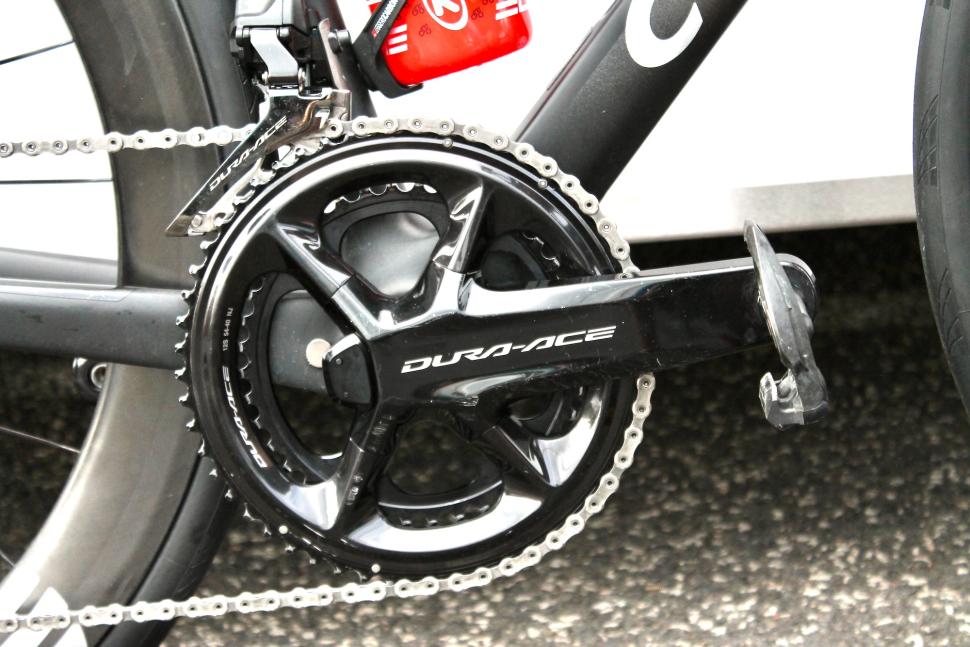
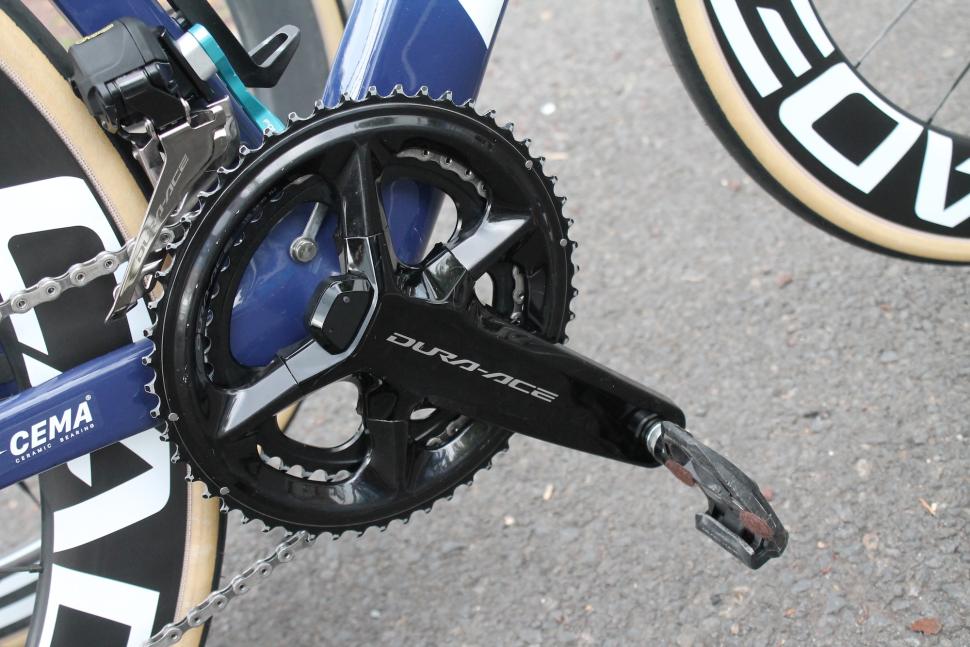
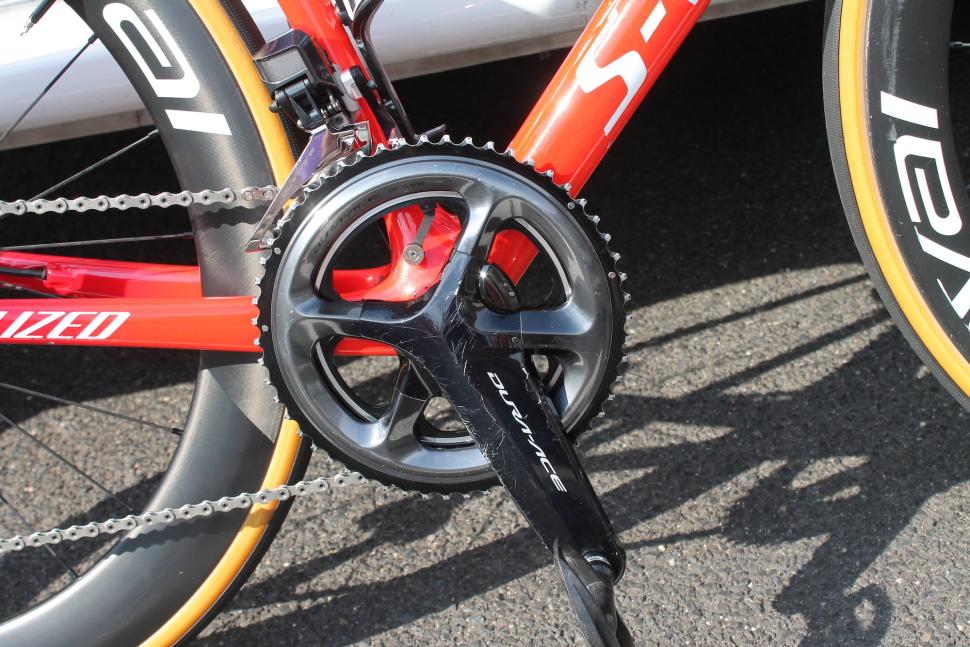
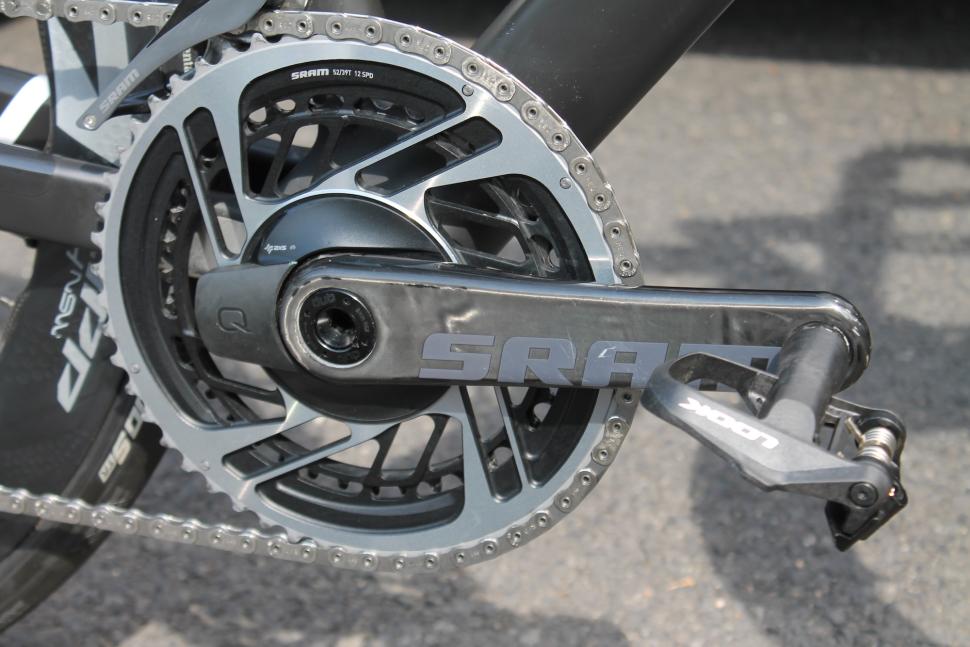
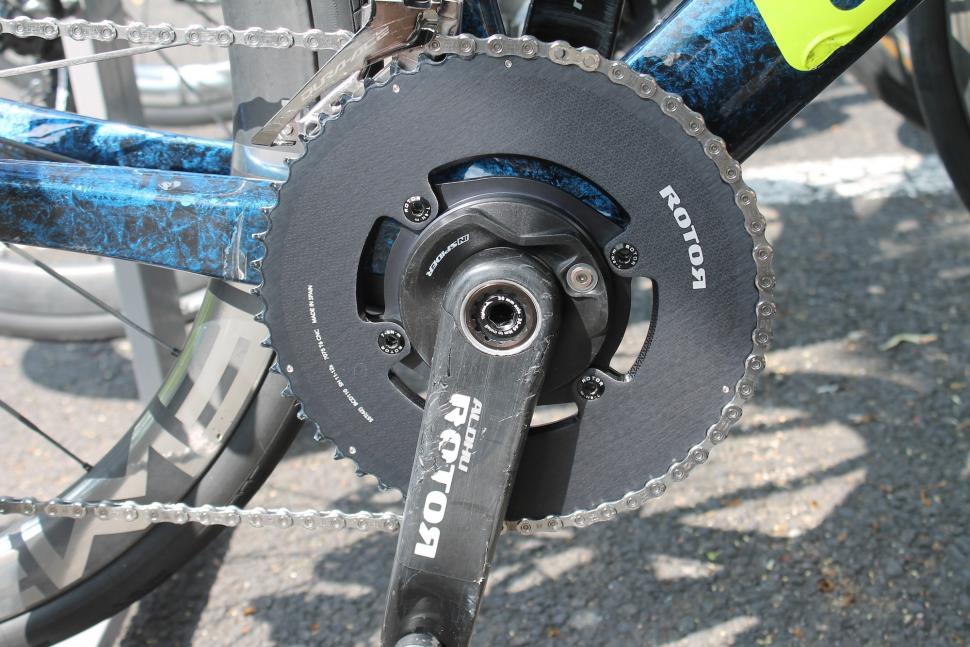
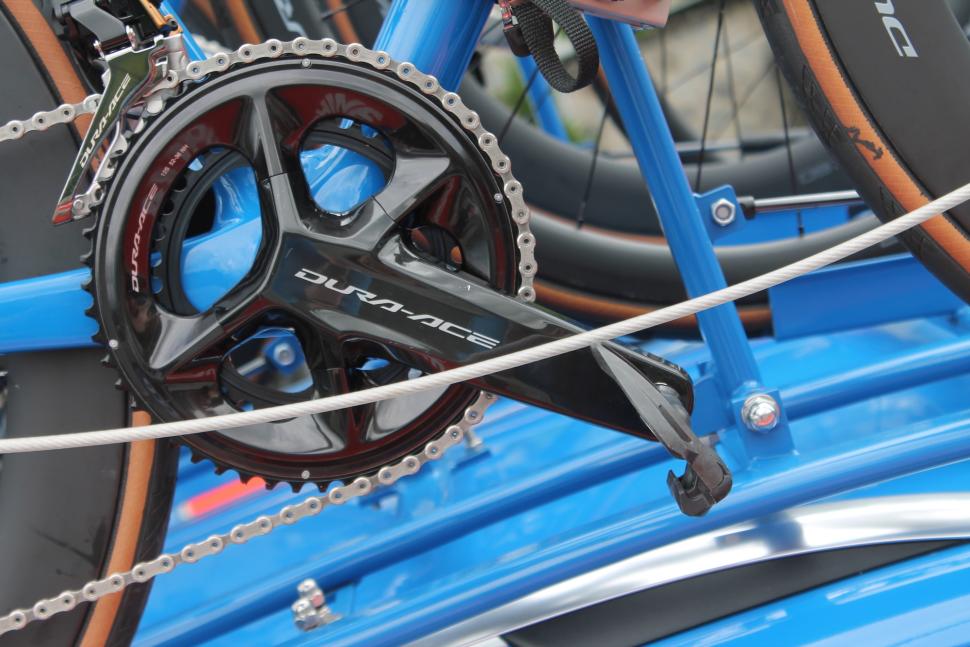
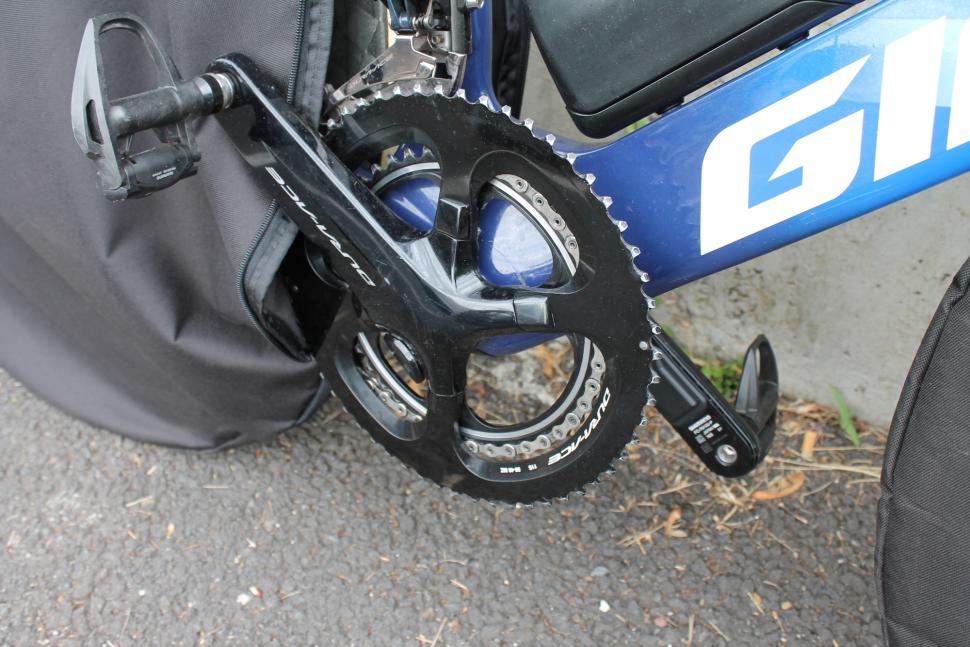
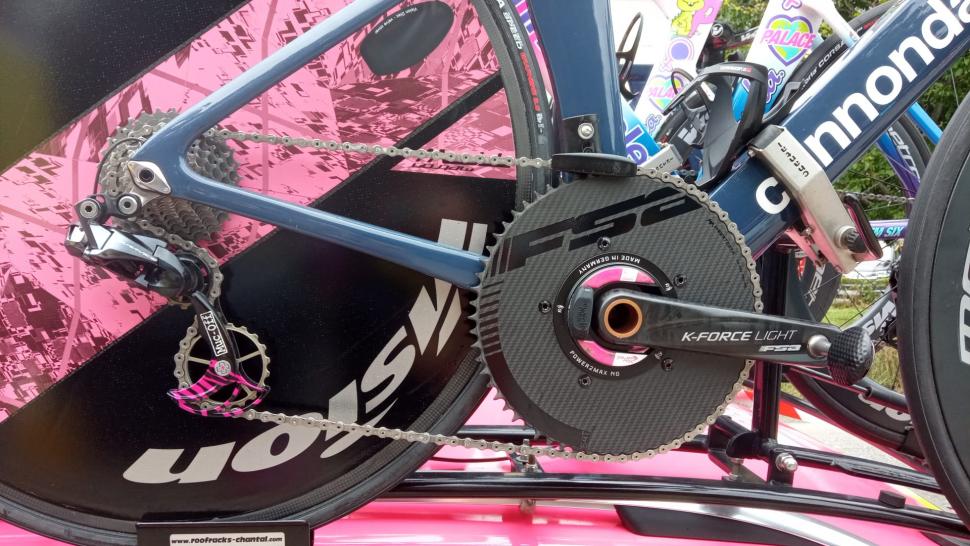
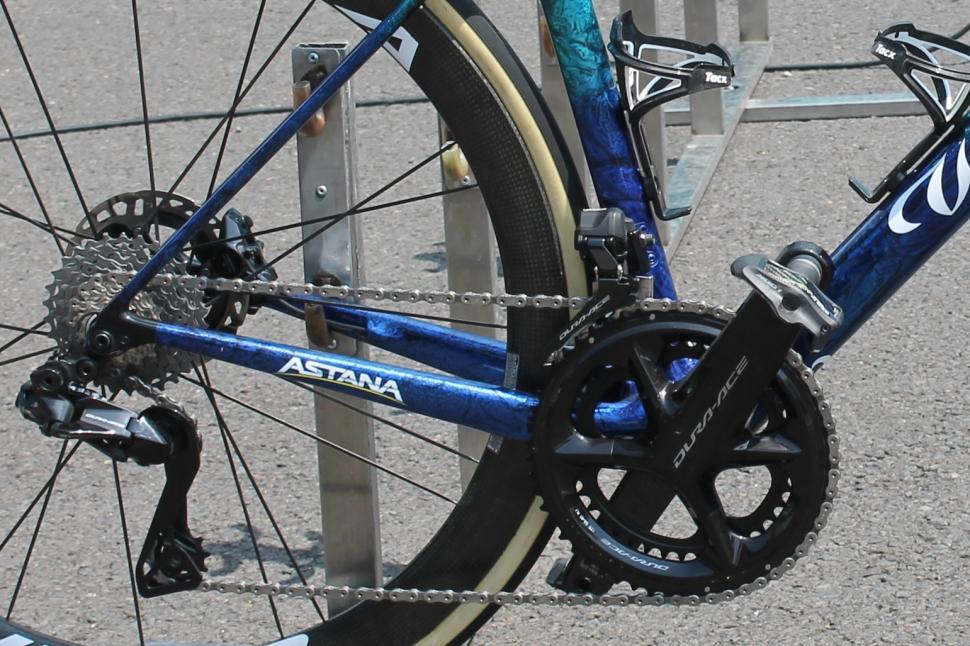
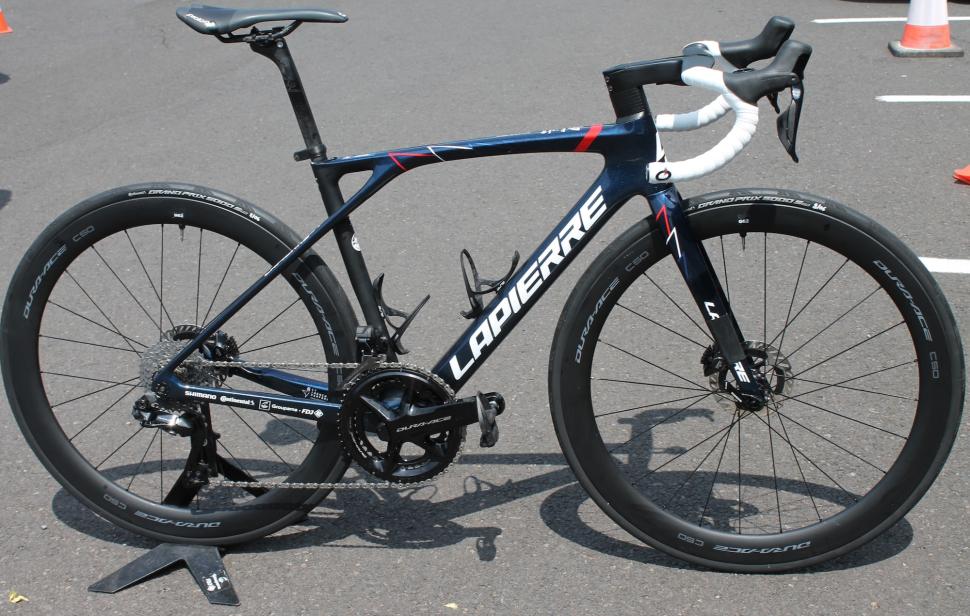
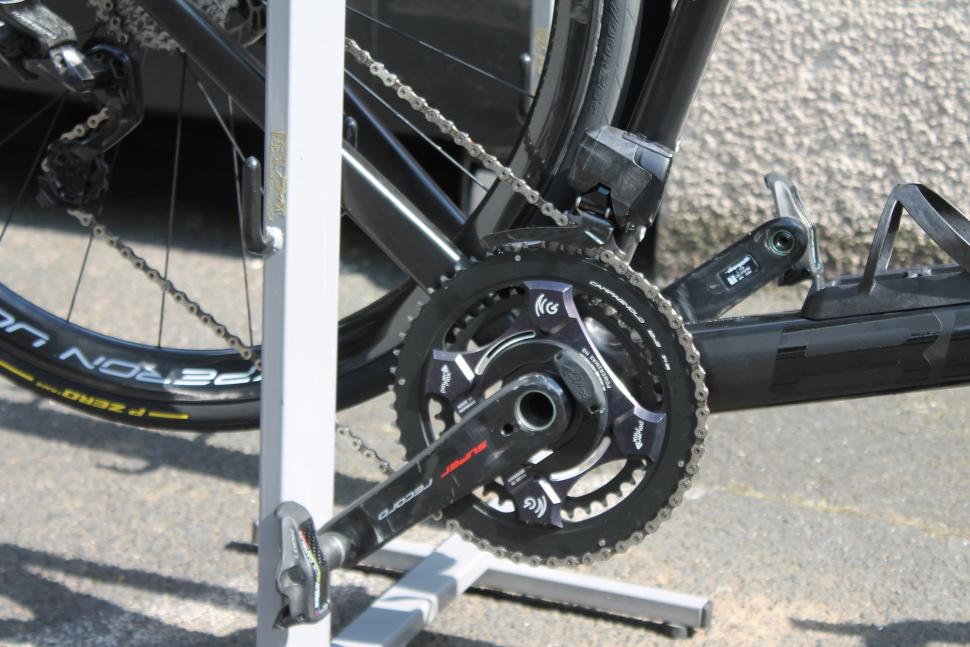
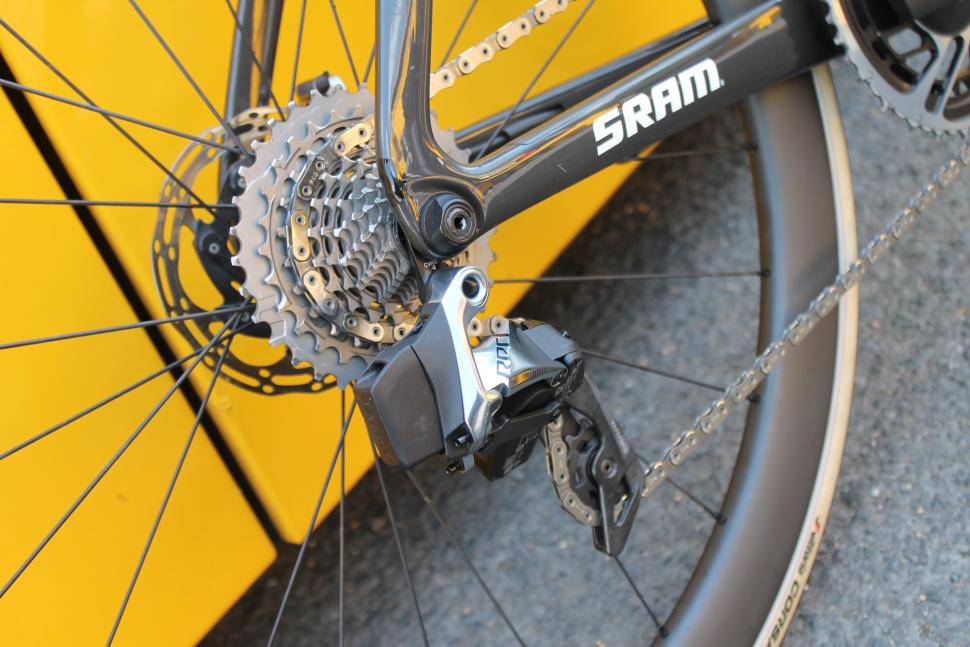
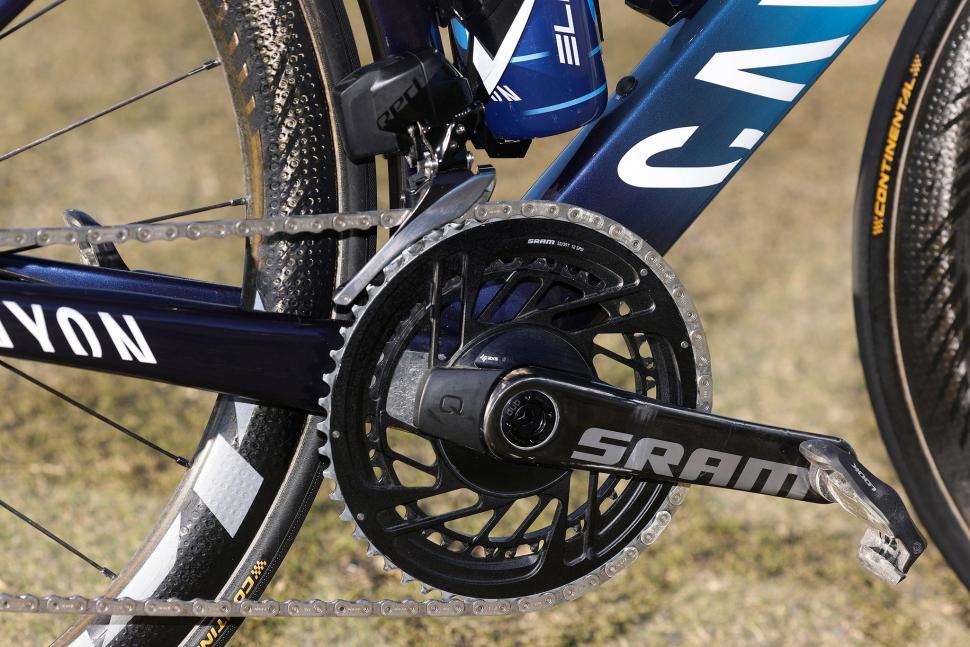
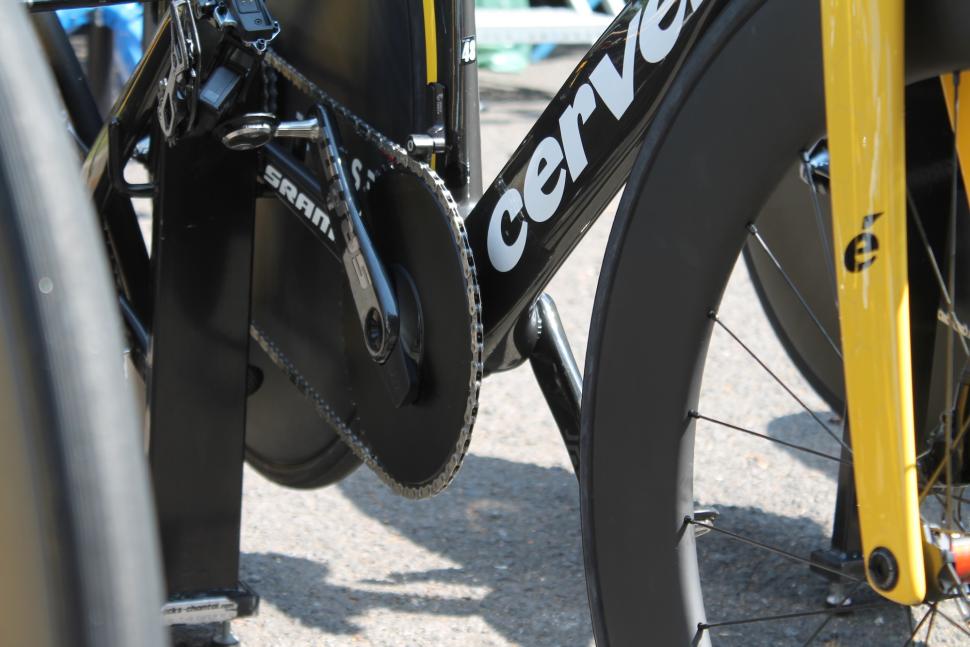
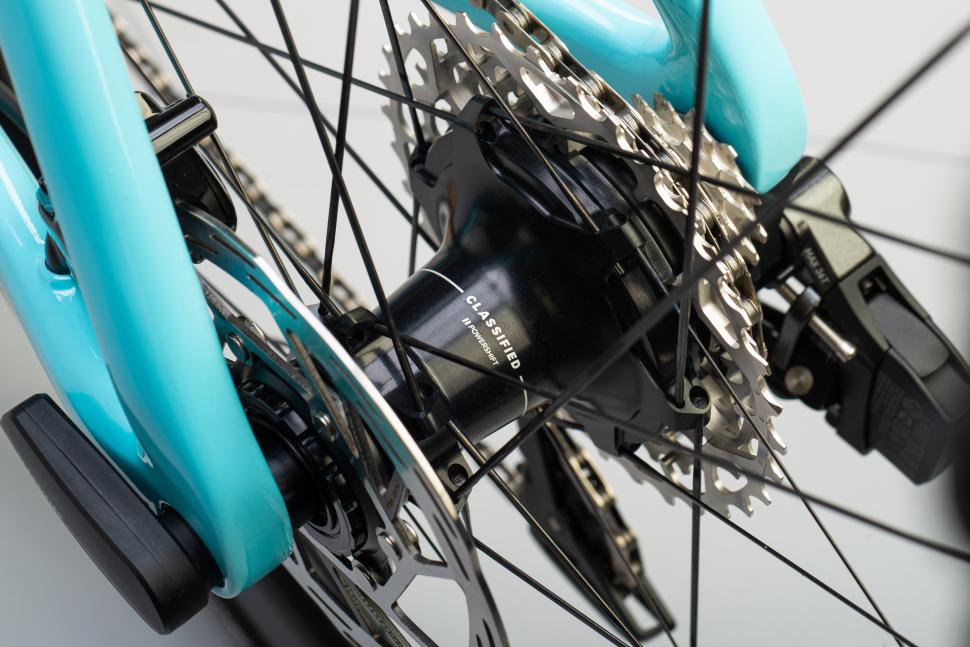
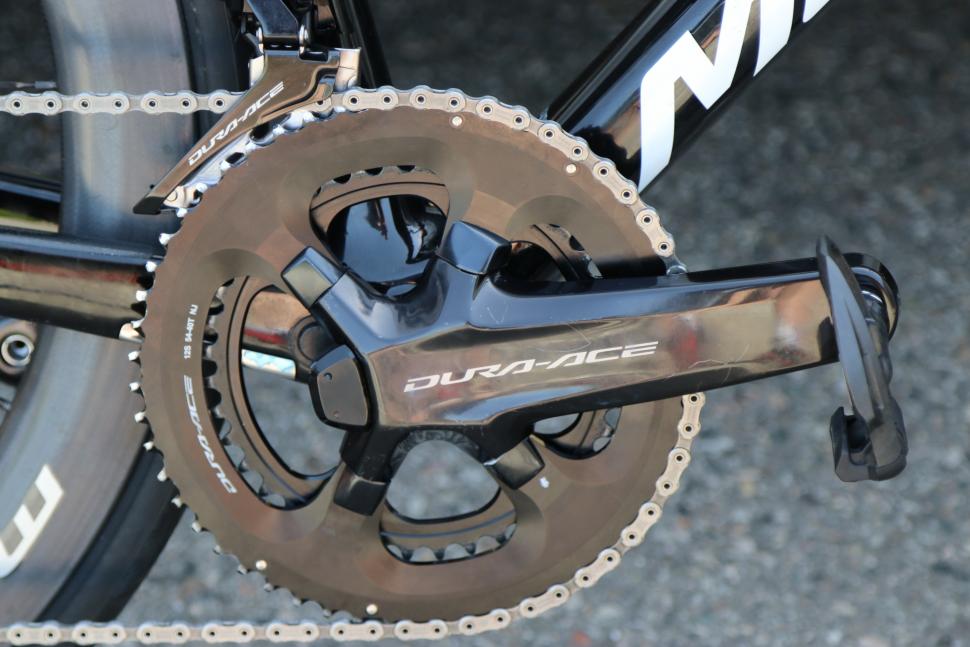
Add new comment
23 comments
No one other than a professional racing cyclist or an amateur of the very highest level needs an 11 tooth or even a 12 tooth sprocket, unless their big chainring is a 44 rather than a 50 or 52.
People tell themselves that they do because they want to pedal really fast down hill. But it's likely that their pedalling at the low wattages of ordinary cyclists merely increases their drag from the air, downhill; so they go slower than they would if they stopped pedalling, tucked in their knees to the frame and crouched in an elbows-in aero position.
As to the idea that a double or triple chainring giving duplicated gear ratios is somehow a disadvantage .... this too is an unthinking analysis.
The point of a double or triple chainring is to provide, from the same cassette, two or three gear ranges that are close enough to enable the rider to find the ideal cadence, whether for generally slowish ascents, mid-speed undulations or flats agin' the wind, or fast riding when the road is smooth & flat with the wind behind. It isn't to provide more gears but rather to provide better gear ranges for different terrains/speed ranges.
*******
But our culture encourages sales of high end racey bike parts by seeming to promise the buyer of high-geared stuff that they too can be just as fast as them riders in the TdF by having a Dura-Ace 53/39 chainset and an 11-25 cassette. This is just a-one o' them daft "dreams" they install in the heads of folk far too blase about having their wallets emptied whilst paying no attention to the reality of their actual cycling abilities.
The annoying part for those wanting more realistic gears is that it's often very hard to find them. Because road bike frames tend to come with front braze-on fitting to suit chainrings from 48 - 56, rather than 44 - 50, you'r stuck with a 48 or (more probably) the 50 that the bike comes with. But can you buy a 14-34 cassette? Not really - you have to buy an 11- 34 cassette plus three Shimano cogs of 14, 15and 16 (to replace the 11, 13 & 15). This becomes expensive - and difficult to do as only SJS cycles seems to sell spare Shimano sprockets in Blighty, these days.
********
My own preferred and favourite gear range is a 50/39/30 chainset with a 15 - 36 cassette of 10 cogs. It goes as fast as I can go pedalling (without a significant downhill) in 50/15 (30 mph, briefly) but also allows a twiddle in a very low gear. Each chainring provides relatively close-ratio gears from the cassette, since there's only usable cogs and no wasted 11, 12, 13 or 14 that would never get used.
I'm a very ordinary (and I mean very very very ordinary) 54-year-old cyclist and I use my 50/12 as my standard flat no wind gear to ride at around 23mph, on the bike that has a 52/11 I can certainly get a higher speed downhill than just tucking in until the speed starts to approach 50mph. Pardon me saying so but you seem to be rather solipsistic in your belief that what suits you is what should suit anybody and that anyone who disagrees is just a mug falling for marketing hype. We are all different, you know.
At 23 mph in 50/12 you'll be revving at mid-60s rpm. That's a hard way to pedal unless you're a body builder.
At 120rpm in 50/11, you'd only be doing 44mph, so you must have very whizzable legs to get to 50mph whilst pedaling!
Perhaps you need to practice tucking in a bit if you can't increase speed quite dramatically by getting more aero? To increase downhill speed above around 30mph just by pedalling harder, you'd have to be inputting a rather large number of watts - certainly more than those of "a very very ordinary" cyclist.
You can call hard facts about gearing, aero positions and so forth "solipsistic" but facts are uncaring of our mere opinions, seeing as how they're quite hard to avoid or change.
As a result of a lot of leg weight work as a rugby player I do have rather large pins - think Chris Hoy rather than Froome, though without an ounce of the talent of either - and I find 65-70 a comfortable cadence at that speed. Which just goes to prove what I said, we're all different and it's nonsense to issue blanket statements like "No one other than a professional racing cyclist or an amateur of the very highest level needs an 11 tooth or even a 12 tooth sprocket."
If you look again I said that was on the bike with 52/11 and I get close to 130rpm before spinning out on a downhill, which I don't think is terribly unusual or "whizzable".
That is very true, but most of what you wrote was opinion based on what you think is an ideal way to ride.
How would you have managed, all those years when the highest gear one could buy for a bike was 52 X 13? Did it ruin your cycling?
Let's face it, the reason why most go about with cassettes starting with 11 teeth (soon to be 10 or even 9!) is that its very, very difficult to buy anything else. And nearly every road, gravel, touring or audax bike sold as such comes with such a cassette.
You can buy a 14-28 cassette from Mr Shimano. But no 14 - 34 cassette - you have to make your own franken-cassette from a 14-28 plus an 11-34; or buy individual alternative cogs. This is costly.
In short, the reason most have 11- summick cassettes is because of marketing, driven by the fashions of professional racing (also determined by marketing). "Reasons" given by ordinary cyclists to justify their 11 toofers seem, to me, to be "rationalisations after the fact" (of being caught by a fashion-net).
It reminds me of the highly successful marketing trick concerning cycling helmets - no decent proof they achieve anything but a lot of profits for manufacturers (not to mention the polluting landfill) and increased "accidents" due to risk compensation thinking .... but millions buy, wear and defend them.
I knew it wouldn't be long before we got back on to those dark forces of the global commerce conspiracy and their evil plan to reprogram the worker drones with their "marketing".
This is simply drivel and your determination to say that anyone who disagrees with your opinion as to the correct gear ratio is falling for a marketing ploy is risible. What is the marketing advantage to Shimano of selling 11 toothed smallest ring cassettes? Do you think they are making a few bob on the micrograms of metal saved?
If you want a 14-34 11sp cassette, buy a Miche Primato and stop telling everybody else that they are wrong and falling for a sucker punch by The Man just because they prefer a different gear ratio to you.
I commute with 11-34 and 50/34 and usually average about 75rpm. My speed averages out about 25kph (according to Garmin)
I moved to that setup because it was the cheapest option that I knew would fit on my bike.
It is commuting, so I do the same route every day and don't move out of the 50. I am able to drop to the 11 when the headwind isn't too strong, but usually I don't get down there.
My cadence tops out about 105 on some of the uphill sections.
I am in exercise clothing, arrive sweaty and very much treat it as my daily exercise routine.
I am not a pro.
I commute on 52/36 chainrings with an 11-28t cassette and I'm usually in the 52/11 on the flat if the road is clear. And I'm just a 48-year old hobby cyclist.
What speed are you doing and, as a result, what's your cadence, in that gear?
When I were a lad, 382 years ago, even professionals like that Merckx, had 52 X 13 as their top gear. They still managed to race at speeds not that much slower than today's professionals.
When I raced, often in races on the flat that averaged 27mph+, I managed to do so on a 52X14 or even 15 top gear. This didn't win me any sprints but it got me to the finish only a few seconds behind those who did sprint to victory.
Of course, I don't mind if you want to go about in 52 X 11 at 55rpm cadence but when it means I can't buy the cassette I want because all the fellows with "all the gear" only want to have the same gears as the bloke wot won Le Tour, it gets a bit tedious.
About 45km/h, cadence about 80. Is that acceptable to you?
Your flat road commuting pace equates to about 21m30s minutes for a 10 mile TT. That's pretty fast (particularly as I don't suppose you commute on tri-bars, TT wheels, etc.)
As I'm commuting it's not a speed I sustain for particularly long distance thanks to the hazards you might expect on a city rush hour journey, but I need the 11 when I have enough clear and flat bus lane to be able to get to around 30mph. Wouldn't know about riding TT as I've never done one, but on a good commuting day on my sub-8kg carbon bike it'll take me about 30 mins to travel about 9 miles in London traffic with a couple of hundred metres of ascent.
www.bikecalc.com/gear_speed may be of interest here.
80rpm in 52/11 is almost 50kph.
Recent hour record breaking bikes had around the equivalent of a 52x11 gear, pedalled at about 100rpm. I guess MAMILs are more likely to be in the 80-90rpm range - much less over any distance doesn't seem very efficient.
The bike calc is indeed very revealing when it comes to an examination of many of the anecdotal gearing and speed claims of many internet forum posters on these matters. I nivver realised how many potential TdeF riders there were just going about from A to B or content with the Sunday club run!
In my opinion, nce the gear ratio goes much below 1:1 then you can't pedal any mr beause the front wheel keeps lifting off the ground.
Is that a bald opinion (one with no experience-hair), a potted opinion from a cycling website or one based on your own experience?
My own experience is that gears below 1:1 are very good at enabling a pedal up those very long and steep ascents to be found in many locations across Blighterdom. This also seems to be the experience of tens of thousands of touring cyclists, over the years, including me on my many cross-Pennine trips with rear panniers but no front 'uns.
I've not yet seen a tourist or any other slow-twiddler o' the hills go tit-over-arse from the bike whilst twiddling up the steeps (and I've frequented many such steeps) despite their 24 ring and 34 cog.
You can get to a point where your road speed is so low that a bumpy bit might cause you to topple slowly sideways, mind.
As a 50 year old 77kg 3.8w/kg rider, as far as I'm concerned my 11 & 12 tooth sprockets are effectively spacers that help with my chain line. I run 11-28 and 11-30 11 speed cassettes (with 50/34 or 36 front) but would happily give up the 11 tooth for tighter mid-gear ratios.
On my gravel bike I've got 46/30 at the front and 11-34t at the rear. I find this suits me very well cycling on the road. I can comfortably ride at any speed from walking pace up to 35 mph.
My cadence is usually around 90 though, if it was lower then I'd want a higher top gear.
Reminder that unless you are putting out 5.5 watts per kg you shouldn't be making gearing decisions based on what the pros are riding.
To be fair, the article says that.
Indeed it does, hard to overstate though. You see so many ordinary people who wholeheartedly believe that they need gearing to pedal at 40mph and sacrifice an enjoyable ride to get it.